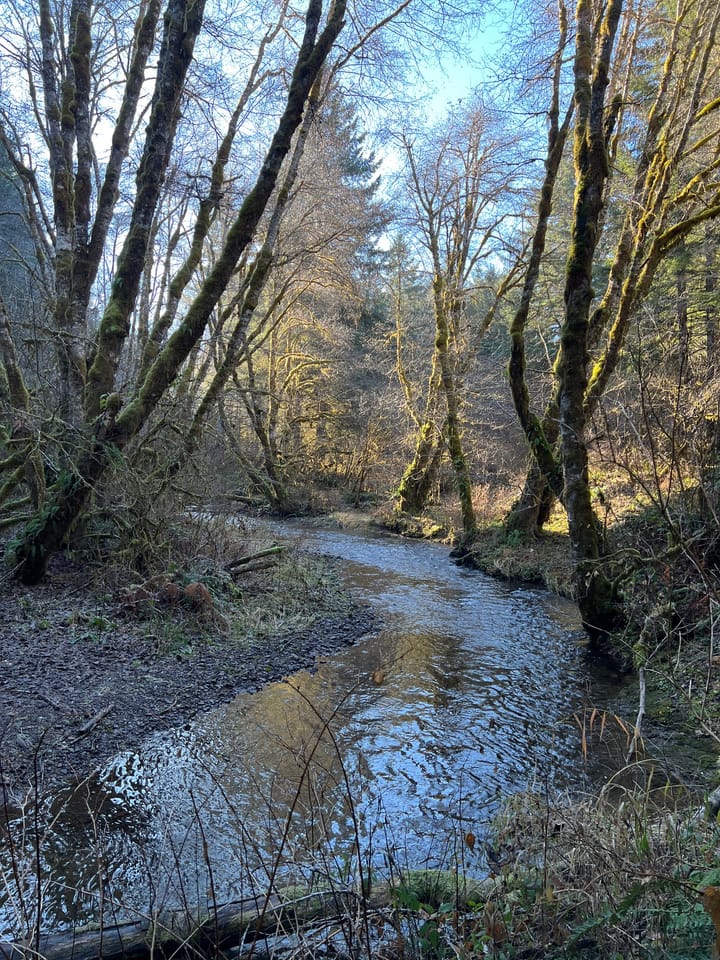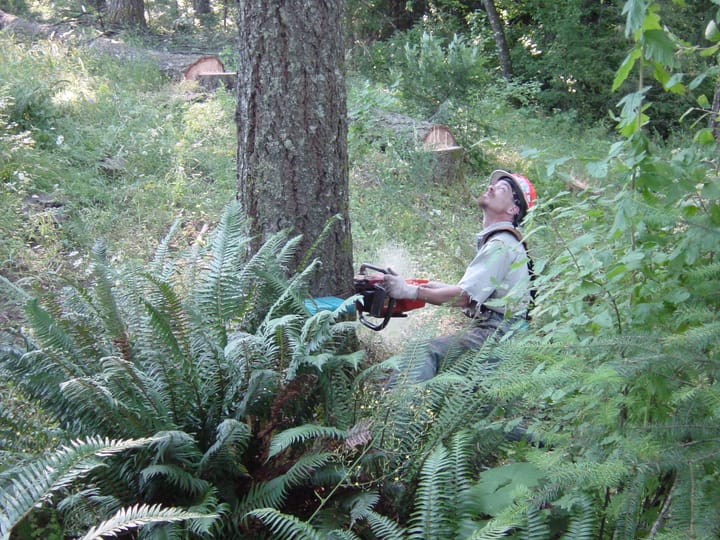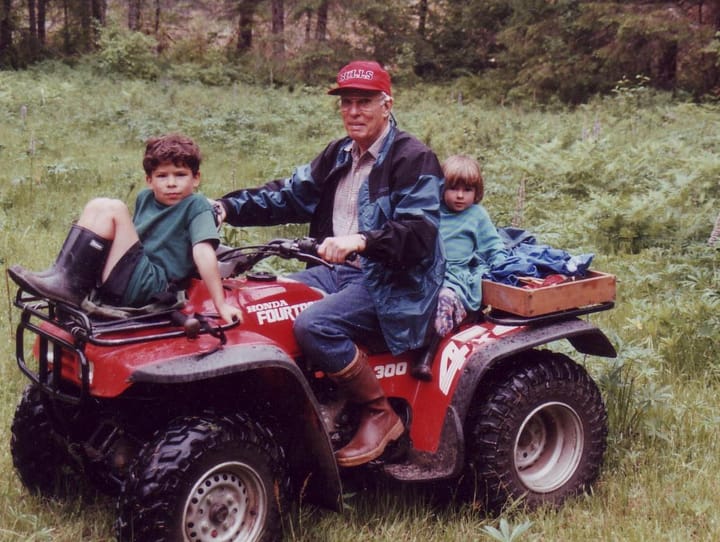Metaphors Matter

Exploring Opportunities for Reframing Our Relationships With One Another
There is so much that is right, good, and encouraging about the accord that was recently reached between representatives of the so called timber industry and conservation groups in Oregon, and there is one key element that is wrong. I hope that we’ll all support the effort’s success. I also invite all involved to look closely at what is wrong and the ways we can fix it.
For how long have we allowed our thinking and talking about Northwest forest issues to be framed within the confines of the binary metaphor of war? Which side are you on? Who’s getting the upper hand now? Those greedy timber beasts or the unreasonable, elitist enviros? While it may sell papers and attract clicks, this approach is a counter-productive, over-simplified illusion that we can no longer afford. Yes, survival requires humans to simplify complex realities enough to allow us to get a grip on them, but we also need to recognize where the line lies between constructive and necessary simplification and unconstructive, and when we’ve crossed that line. When it comes to the ways we think and talk about Oregon forests, we’ve oversimplified, lost complexity that matters, and we’re paying the price.
Should we be faulted for this well-worn habit? I think not. From the cradle to the grave we’re immersed in a sea of binary, oppositional framing whether it’s the Cold War, school and sports team rivalries, or red state vs. blue state. Just because these frames of thought and speech are ubiquitous and comfortable doesn’t excuse us from the responsibility to recognize and reject them and replace them with something better.
Making the transition from the traits of frontier pioneers, that remain strongly ingrained in our culture, toward the settled, responsible citizens that we’re called to become challenges us to mature. One important step in that direct is to change the metaphors used to frame our thinking and words related to people and forests. We’re overdue in replacing the common, but counterproductive, war metaphor with a more accurate view of a multidimensional universe of goals, priorities, and circumstances.
Shifting from the easy work of finding fault to the harder job of suggesting better alternatives, I propose this starting point. We need to move from the binary boxes of “which side are you on”, past the two-dimensional, zero sum continuum along the line between economic and ecological priorities to arrive at a model of a universe of positions shaped by three or more dimensions of values, priorities and circumstances. To succeed with the universe metaphor we must identify the most obvious additional dimensions. Experience as a forest advocate and owner and former member of Oregon’s Board of Forestry has provided me chances to consider the many ways that my fellow forest folk differ from one another and why, as well as where our areas of common ground might lie. My schooling on this issue includes an experience at a Board of Forestry reception in a rural corner of the state where an energized industry lobbyist drummed sharp fingers on my chest to back me into a corner where he growled in my face “you need to understand that you and I share absolutely nothing in common!”. I invite you to join me in considering whether that is true.
The universe metaphor must be made concrete and useful by considering the multiple axes running through the universe. Best results will come when we each consider what dimensions, beyond the baseline spectrum running between the poles of economy-ecology are most appropriate and useful. I propose the following for starters:
- Add a second dimension of the relative priority of the well being of and opportunities for people in rural, forest-dependent communities. I have seen representatives of both large publicly traded timber companies and environmental groups in close company at the same end of this continuum with their actions and words reflecting low levels of concern. Legal structures of publicly traded companies limit their ability to prioritize much other than short term financial returns. Some non-profits’ actions suggest that the job of defending nature leaves no room for attending to questions of human well-being. Alternatively, I see representatives normally considered on opposite sides of the tired timber war divide both showing strong concern for human well-being and opportunity. Between these poles, individuals and entities are arrayed all across the spectrum.
- A third dimension might be the individual’s or entity’s relative power and impact. Here strange, huge bedfellows with global reach like Weyerhaeuser Co. and The Nature Conservancy anchor the high impact end of the spectrum while tiny, scrappy forest operations and non-profits work away at the other end.
- A fourth dimension runs between those with a proven commitment to intellectual honesty and those with low levels of commitment. A legendary conservationist responded to my question about the importance of being factually accurate with a wry “well, it should always be considered”. Given the war metaphor, we shouldn’t be surprised when opponents broadcast opinion-shaping illusions by being highly selective in focusing on the information that advances their cause. Often this crosses the line into intellectual dishonesty.
- A fifth dimension could be relative commitment to seeking and celebrating the common ground needed for diverse interests to live compatibly in any place. We all know those who look on efforts to find common ground as an idealistic waste of time as well as others for whom it is a high priority.
Returning to the landmark forest accord that is currently being advanced in Oregon, it provides us an important opportunity. Though with MOU signatories facing off, with thirteen groups making up each opposing side, the war metaphor is alive and well, signatories have already taken a step in the right direction by developing enough common cause to commit to working together. I invite all to join me in supporting their progress. Moving forward they have the opportunity to evolve beyond the oppositional structure by recognizing that neither side is monolithic and that they all inhabit unique points in the universe of values, priorities and goals. Wouldn’t it be exciting and constructive to get all twenty-six signers in a room and have them align themselves along each of the axis suggested above? I’m confident that the exercise would help them see the weaknesses of having thirteen face off with the “opposing” thirteen across the battlefield of the negotiating table.
In the interest of fairness, signatories of the MOU will do well to ask themselves “what parties, other than those at the table, will have valuable perspectives and be impacted by our decisions? How might we effectively include and learn from them?”. For example, though family foresters own 35% of private forests in Oregon we are not effectively included in the process. Similarly, decisions made through the MOU discussions will impact a wide range of Oregonians, including many who are marginalized and at higher than average risks linked to the pandemic and its economic impacts and who do essential forest-connected work. Efforts can and should be made to include these people’s valuable perspectives in the processes. The current common demand of “not about me without me” seems a reasonable one.
Another way to shift the metaphor from two warring parties to a universe of values, priorities and circumstances is to recognize and capitalize on “next time” opportunities. Here are some that I see:
- Next time someone asks me which side I am on, or tells me which side I am on, I will explain why that is a ridiculous question and action.
- Next time I hear that the Governor and her staff are meeting “with timber”, but meets with just a few representatives of the large companies, I will suggest ways that they can and should include a more inclusive range of perspectives in the conversation.
- Next time I encounter a journalist or others falling back on the tired war metaphor I will invite them to replace it with the more constructive universe metaphor as a way to better explore the important complexities of the issues.
- Next time I have a chance to listen to and try to understand people’s perspectives on forests that may be different from my own and/or work together to find useful common ground, I will both jump on it and resist the subconscious inclination to assign them to one of two boxes.
I encourage you to join me in seeking and using chances to reframe the ways that we think and talk about forest issues and opportunities. We all have many “next times” to take advantage of.
Given the high voltage of decisions about the future of Oregon forests and forestry, I see no reason to expect that the shift to a new metaphor will reduce the level of stress, tension and conflict related to forest issues. Oregonians’ diverse priorities and worldviews make struggle inevitable and, when handled well, healthy. However, a new metaphor, with its focus on multiple dimensions providing more depth, should help us better understand with whom we have common cause and why in more nuanced and useful ways. Over time, this has the potential to help us catalyze the beginnings of a shared vision for the future of forests and forest-dependent communities. In these polarized times, I sense that many of us hunger for such an anchor.
We all have moments in time, as individuals, groups, or cultures, when we become aware that it is time to question and change old habits, no matter how imbedded they are. For those of us committed to the future of forests and forestry in Oregon we have arrived at one of those moments. Recognition and engagement, reflected in changed behaviors, will open doors to new possibilities at this time where we badly need them.
“If you want to change the world, change the metaphors.” – Joseph Campbell


